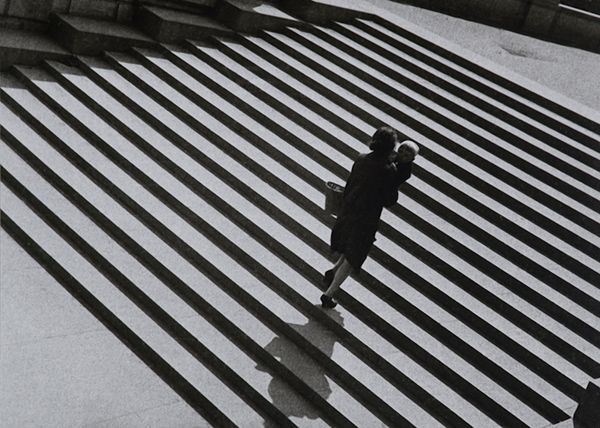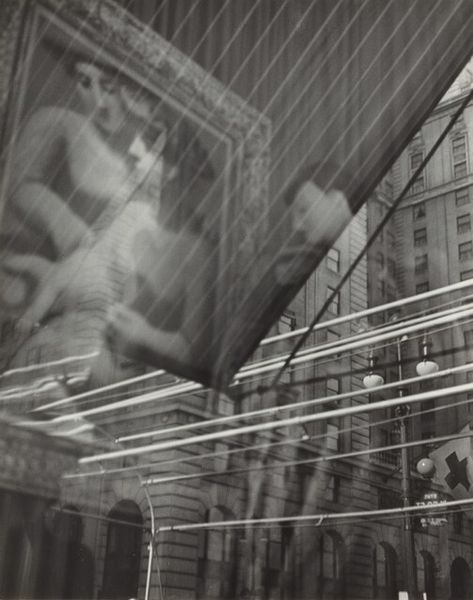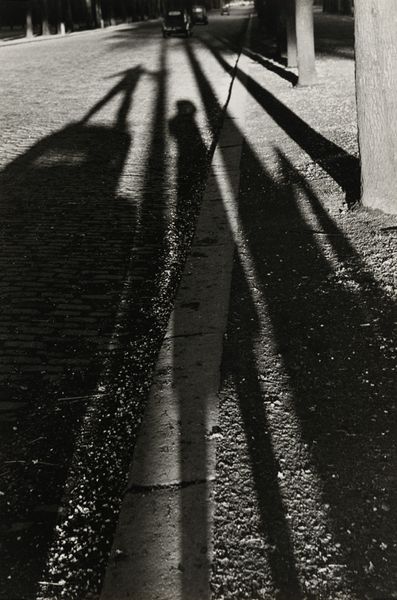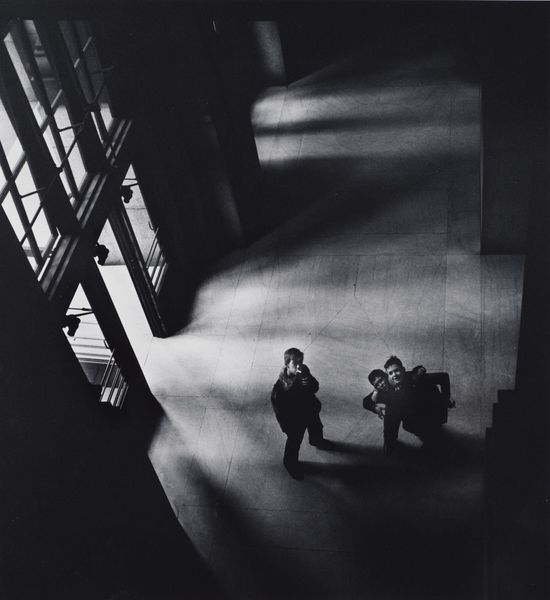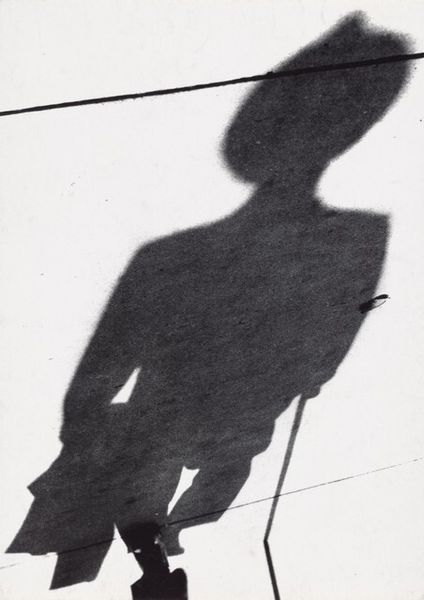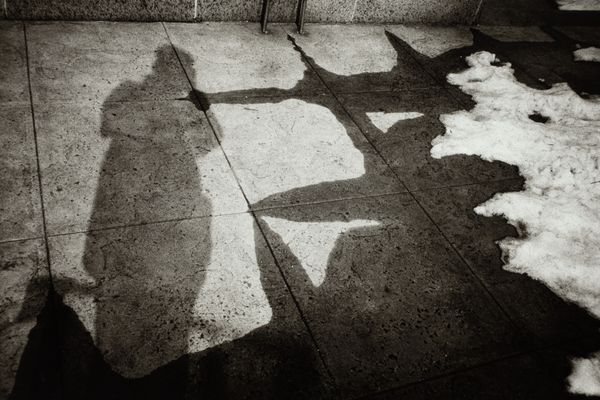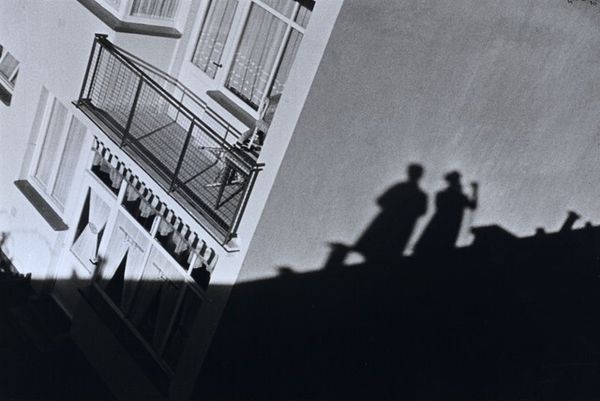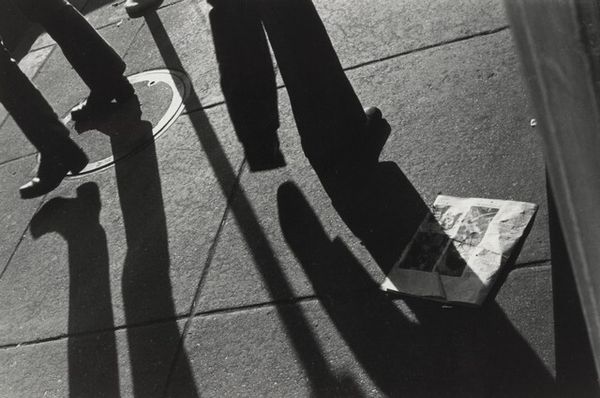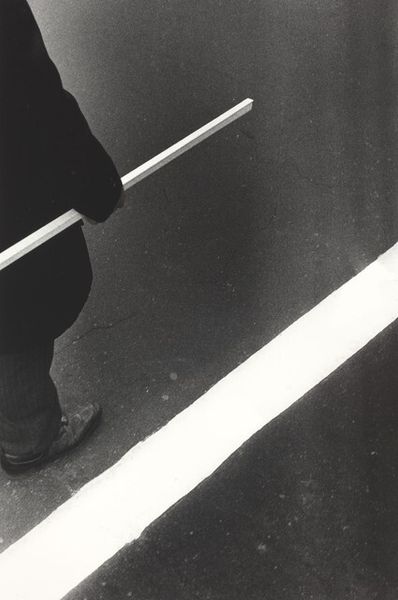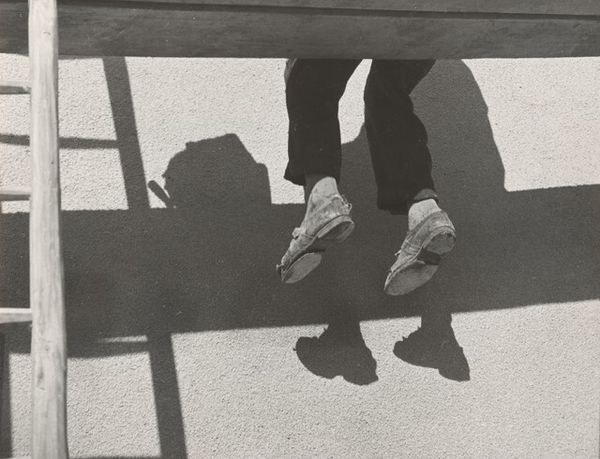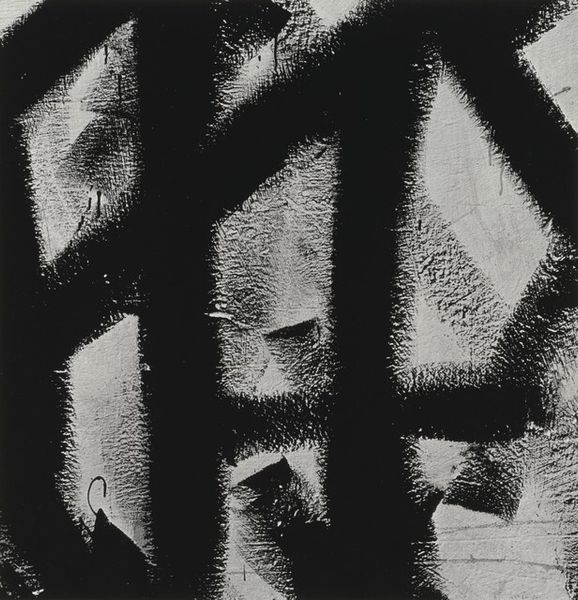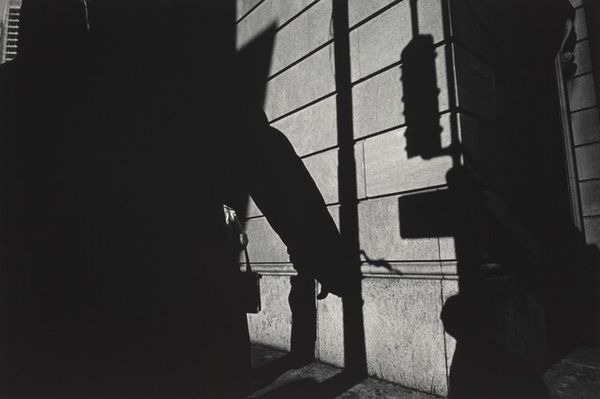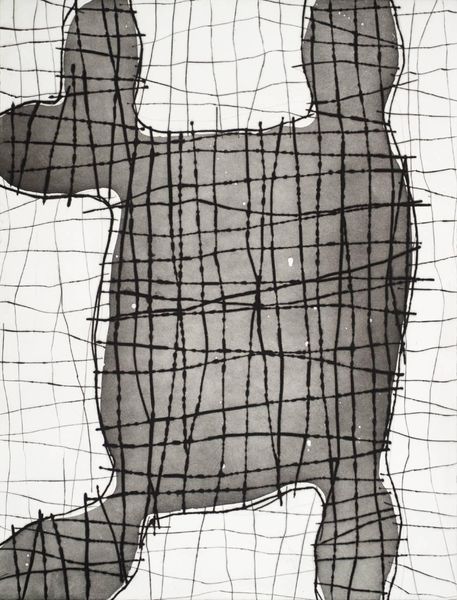
photography
#
3d printed part
#
sculpture
#
landscape
#
outdoor photo
#
street-photography
#
photography
#
realism
#
statue
Dimensions: image: 14.7 × 14.4 cm (5 13/16 × 5 11/16 in.)
Copyright: National Gallery of Art: CC0 1.0
Curator: György Kepes' "Untitled (Berlin)" from 1931, a street photography piece, stops me right in my tracks. The starkness of the monochrome, combined with that almost invasive grid overlay, is just… hauntingly captivating. Editor: My first impression is one of unease. That grid feels like a cage, or a viewfinder trying to make sense of… well, what exactly is it trying to contain or define? It's definitely not just a pretty picture. Curator: Absolutely not! It hits me as the kind of scene where loneliness prowls even within a bustling city. I bet the shadow is almost more alive and defined than the human figure. Editor: It is the power of suggestion! The presence of a shadowy figure almost pushes us to speculate more deeply, almost playing a psychological trick that can transform an ordinary street scene into a space of profound tension. Shadow implies concealment and what might lurk behind it! It creates intrigue around hidden aspects or repressed feelings. What cultural myths around dark dog were current? What cultural anxieties in 1931s Berlin did the grid mirror or amplify? Curator: Oh, without a doubt, the overlay acts like an oppressive system trying to map out existence but actually highlighting the inherent unmappability of real life, real feelings! Each square imprisons a detail but cannot hold the whole. But the dog: does the grid empower or oppress this central figure of urban loneliness? Editor: I think you’ve nailed something crucial. The grid can be read as a metaphor for control – think surveillance, urban planning, social structures. But simultaneously, by framing the subject, it also elevates it, forcing our focus. Curator: You are absolutely right! Even beyond that oppressive political reading it may hint at that feeling we sometimes all experience when walking down busy streets feeling separate from humanity. And yet by framing our subject in black against pale paving slabs in contrast to a group of paler silhouetted fellow walkers Kepes seems to make a wider philosophical statement about society. Almost daring to ask: who watches whom, what freedoms remain? And can we still walk? Editor: Precisely! Kepes forces us to confront those anxieties. Even the date screams tumultuous change – 1931 in Berlin was not just a year, but a looming premonition. Curator: So true! After looking at it a while it becomes far more than just a simple street photo. It acts as an accidental record of a deeper history that refuses to die. Editor: Ultimately, I find this is why the image is still worth spending time with almost 100 years after it was taken, a photograph of real human existence presented under layers of imposed or chosen meaning.
Comments
No comments
Be the first to comment and join the conversation on the ultimate creative platform.
